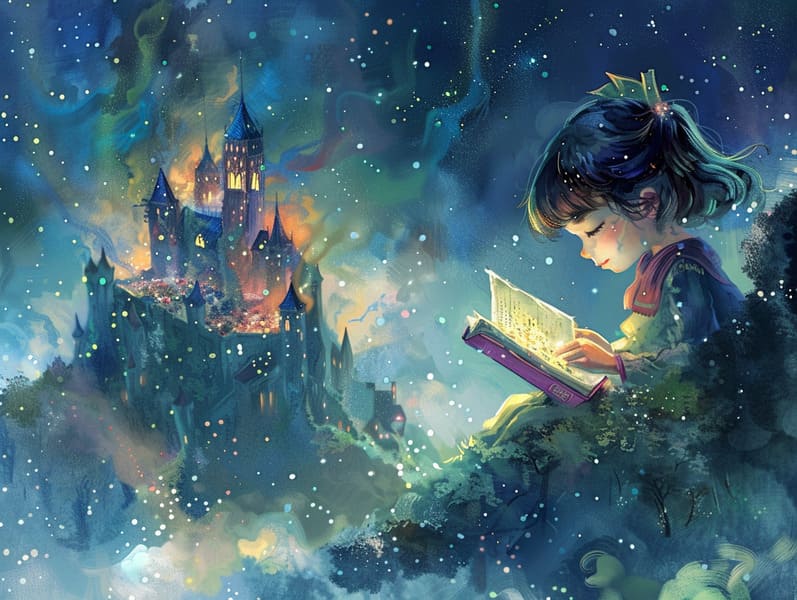
Old fairy tales have historical significance. These stories have been whispered from one generation to the next well before they were ever transcribed. They were born from a variety of societies, including Western traditions. They were initially narrated among older generations, often carrying themes and messages relevant to the societal norms and beliefs of the time.
Jacob and Wilhelm Grimm, Jacob and Wilhelm (the Grimm brothers), were among the first to gather and publish many of these beloved fairy tales. Their collection, "Grimm's Children's Stories," included tales like "Cinderella," "The Story of Hansel and Gretel," and "Schneewittchen," which have since become essentials in the world of children's fairy tales. Similarly, H. C. Andersen's fanciful tales, such as "The Sea Maid," and "The Little Duckling," have captured hearts worldwide, establishing their place in the pantheon of classic fairy tales.
Even though they are old, classic fairy tales remain as impactful as ever, especially as children's night stories. These fantastical tales are now available in diverse formats, including artistically illustrated books, charming animations, and digital fairy tales.
Their lasting presence can be linked to several captivating elements:
Vital Lessons: Ancient fairy tales often whisper important moral lessons. Stories like "The Shepherd Boy and the Wolf" teach the benefit of honesty, while "The Race of the Tortoise and the Hare" underline the values of perseverance and meekness. These tales offer children clear distinctions between correct and incorrect, guiding their moral compass in a kind yet impactful way.
Empathy and Awareness: Classic fairy tales frequently feature protagonists facing struggles and tests, encouraging young readers to relate with their struggles and champion their triumphs. For instance, "Beauty and Her Beast" illustrates the necessity of seeing beyond looks to comprehend the real person of a individual, fostering perception and awareness.
Cultural Insights: Many classic fairy tales are deeply ingrained in the cultural contexts from which they grew. Reading these stories can provide fascinating glimpses into different beliefs, nurturing a sense of global awareness and appreciation.
Inventiveness and Fantasy: The fantastical elements in classic fairy tales—talking beasts—generate children’s creativity. These stories take readers to magical realms, revitalizing inventive dreams and a sense of mystery that persists a lifetime.
Old fairy tales are not only enchanting but also enlightening. They work as fantastical tools in fostering various cognitive and emotional skills in young ones. When ancient fairy tales are spoken out loud, they advance language skills by showing new terms and meanings and elaborate sentence structures. This practice also develops hearing perception and attention, as young readers listen intently, looking forward to see what happens next.
Furthermore, analyzing the themes and characters of fairy tales can develop evaluative skills and cognitive skills. The young are educated to notice patterns, guess what will happen, and know cause and effect. These explorations also advance young readers voice their thoughts and feelings, cultivating their emotional intelligence.
In today’s technological age, the existence of online storybooks has made these narratives more attainable than ever. Digital sites and online apps share broad selections of ancient fairy tales that can be experienced or played anytime, anywhere. Fairy tales voiced are particularly well-received, sharing an fun way for kids to relish these spellbinding stories. Read-aloud stories and read-to-me videos carry characters and settings to life, often joined by bewitching sound effects and melodies that improve the story journey.
The persistent attraction of ancient fairy tales lies in their ability to adapt to present eras while keeping hold of their underlying messages. Contemporary renditions of these fairy tales often show more varied characters and modern settings, making them meaningful to today’s audience. However, the fundamental themes of heroism, sympathy, and justness remain unchanged, continuing to touch young readers of all ages.
Fairy tales also offer a sense of solace and knownness. They disclose a structured narrative with a obvious beginning, middle, and end, often winding up with the closure of conflicts and the triumph of righteousness over wickedness. This dependability can be consoling for young ones, rendering a sense of firmness in an ever-changing world.
Traditional fairy tales continue to enchant and enlighten new generations, maintaining their elegance and relevance in modern society. As bedtime stories for kids, they present to a perfect blend of charm and understanding, cultivating moral values, empathy, and creativity. The presence of web-based fairy tales and the sought after status of fairy get more info tales recited guarantee that these ancient tales remain acquirable to new generations.
By holding onto and divulging these fairy tales, we continue to recognize the rich tapestry of human imagination and cultural heritage. Whether you are exploring a artistically illustrated book, browsing a internet library, or listening to an read-aloud book, the loveliness of popular fairy tales is always within reach. These narratives show us of the immortal nature of fairy tales and its ability to link us across centuries and lands.
Even if you are seeing a gorgeously illustrated book, accessing a online collection, or listening through an narrated book, the wonder of classic fairy tales is always within reach.
These stories teach us of the unending ability of narratives and its ability to draw us together across epochs and places, weaving a spell that enchants and educates alike.